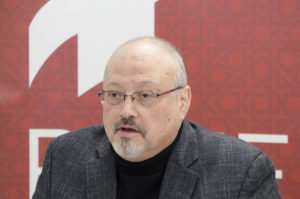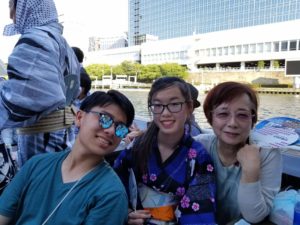Over the past two years, Lick-Wilmerding High School’s technical arts program has added two new teachers to its rank, Susa Cortez and Elizabeth (Lizzy) Brooks. With their additions has come new energy and the expansion of the department’s emphasis on multidisciplinary work. Susa Cortez currently teaches Design and Technology as well as Algorithm to Object. Lizzy Brooks currently teaches Design and Technology, Computing 1, and Computing 2.
Andrew Kleindolph, chair of the technical arts department, says that the goal of the shops program as of late has been to add “more crossover between disciplines…we’re increasingly looking at that: how do we make the tech arts experience as integrated into the entire school experience as possible.”

Susa Cortez
Lick-Wilmerding’s newest technical arts teacher, Susa Cortez, said her favorite place to go on weekends is anywhere with hills or mountains.
“Hills, mountains, anything. I think one of my favorite places right now is Shasta, but it’s too far away, so crossing the bridge: Muir Woods or Mount Tam, something over there. I really like mountains. They remind me of my hometown.”
Susa Cortez, age 28, was born and grew up in La Loma, Mexico until she was 12-years-old. The transition from Mexico was difficult for Cortez.
When Cortez immigrated to the United States, having grown up only speaking Spanish, her middle school and many of her early high school classes were English as a Second Language (ESL). Because she was good at academics, she made her way into more advanced classes. “[It was] really hard to go from ESL to Honors English. From reading in basic–learning about pronouns and past tense, and then jumping to Hamlet,” Cortez said.
As a teenager, Cortez became passionate about things counter to her childhood. “I wanted to be a punk rock person in high school and middle school and I was so against Mexican music; all I wanted to listen to was punk rock and heavy metal,” she said. “…there was a lot of shame, to recognize I was from a small town, that I came from a small town where there was not much there… I wanted to fit in so hard with the culture here, so I kind of ignored my culture for a while.”
Still, overall Cortez enjoyed high school. She found places where she could be passionate. She was a Science Olympiad, a member of Math League, and loved art.
When it came time to apply to college Cortez was unsure of what she wanted to do. “I was really looking into chemical engineering” she said, but “It was my art teacher that switched that around for me, and I decided to go to school for art instead of science. It was kind of a last minute decision. But I always liked to build things and be creative.”
Cortez attended the Fine Arts Department of the University of Delaware, where she specialized in sculpture making, which includes metal working, wood working, and printmaking.
Cortez loved the focus on the fine arts because “Whatever you are thinking about you can communicate through making and fabricating and designing art.”
Immediately after college she earned a masters at the Herron School of Art and Design.
During college and graduate school Cortez became more politically aware, which led her to consider how she wanted to connect to where she came from. A lot of the art pieces she has created reflect her struggle to make that connection.
In one such piece, a performance, she wrapped herself in an American flag with patches of the Mexican flag stitched into it. For Cortez, “That’s kind of how I feel. It’s hard to belong, and even though I claim to be Mexican, when I go there I are not seen as such, and vice-versa.”
She then smeared dirt onto the flag because “I worked a lot with dirt. I grew up in a house made out of dirt, and I learned how to fix the houses with dirt and things like that, so I used that a lot in my work.”
Cortez ended the performance by slowly ripping apart the flag.
Today, besides teaching at Lick, Cortez curates a show at the TL Cafe in San Francisco. She also runs an art residency that she founded in her hometown. Each year she and four other artists take three to four artists from San Francisco to La Loma to learn about the culture there and create murals.
Cortez’s favorite part about Lick’s tech arts program is the dedication of the students. “I see a lot of the students put in as much or more time as students did when I was teaching in grad school.”
The one thing she would want to change about the tech arts program is the amount of time she has to teach. “The one thing is it seems like there is not enough time,” said Cortez.
Lizzy Brooks
Lizzy Brooks joined Lick’s tech arts staff last year. She enjoys teaching at Lick because she gets to bring her multidimensional past into her classes.
“I have this really varied background and I have done a little bit of a million different things and what I think is really cool to do as a programming teacher is to make programming multidisciplinary, to make it relevant and accessible to students who have interests outside of just the computer. I’m trying to do real world, interesting projects that draw on different kinds of knowledge.”
The most obvious examples of Brooks’ dynamic, interdisciplinary teaching philosophy are the Computing 1 class that she is planning to rename Graphics and Game Design and her Computing 2 class which next year she plans to call Community Computing.
This year, one of the things students in Computing 1 have been tasked to do is to “come up with a game you want to play and then make it; and that can be about a social issue or it can be like a brick-breaker game, it doesn’t matter,” Brooks said. She continued, “The idea is that it comes from the student — that was my experience: if the idea came from me I was willing to go to any length to make it, but when it came from somebody else, I was really bored.”
Brooks has the background to cover a lot of different student-inspired projects.
As an undergraduate at Stanford, she studied four different fields before settling on history as her major. “I took some programming classes, at one point I wanted to be a doctor, I wanted to be a writer, I was an art major briefly,” said Brooks. She jokingly added, “That’s enough, right?”
Still, after college she wasn’t sure what she was passionate about. Initially, she worked a lot of different art-related jobs. “Basically, I became an artist,” Brooks said.
One of the mediums of art she focused on was photography. Some of her most memorable projects were photographing empty parking lots at night, long exposures, and groups of girls in bathrooms at parties.
A few years after graduating Stanford, she went to graduate school at the University of London. There she mastered in African Studies.
At the University of London she got “A lot of perspective on the world, and how big it is, and what a small part of it I am, and how it’s complicated.” Her study of post-colonial African history was “really interesting to me, because it wasn’t U.S. centered.”
After the University of London, Brooks’ final school was the Maryland Institute College of Art (MICA).
At Stanford she met her husband Abbas Jaffer. They became close through the punk-rock scene in the Bay Area.
One of her favorite things to do on weekends is to go to Golden Gate Park with her family. Her son, Jomy, is really into ducks right now. “He’s two, so he kind of enjoys everything,” Brooks fondly reflected.
Brooks loves reading science fiction. She just finished Blackfish City: A Novel by Sam Miller. “It’s literary enough that the prose is beautiful, but also there is kind of an experimental world in the future, and those are always fun for me to read.”
Additional Thoughts:
Cortez:
“Technicality is important, but more important than technicality is getting students to think outside of the box, and to think of what they are you saying with the thing they are making. You can just make a chair, but you can say so many things with the chair… [The other part of making] is that basically failing is just what is going to happen, and you are going to be learning from that. So if something doesn’t turn around first or second try, it doesn’t mean it is never going to turn around.”
Brooks:
“Something that was a great relief to me when I started working here was that I could stop seeing myself as the sum of prizes that I have won [related to my career as an artist] and I could relax and do the work. That’s something I really like about working here. It feels like it doesn’t really matter — I mean I think that, yeah, my background does inform who I am in the classroom and who I am to my students and how I relate to them. But that’s all it is… It’s just stuff that is in the past. It’s kind of boring. Maybe I’m just in a time right now where I am excited about a lot of new possibilities. I feel like I am really excited about the work I am doing here in shaping classes and connecting with students, and the stuff that I did before feels like something from before.”







